Birdland
BACK TO FULL TOUR
Garden Features
Drought Tolerant
California Natives
Deer Resistant
Drip Irrigation
Pesticide Free
Reclaimed/Recycled Materials
Sheet Mulching
Lawn Conversion
Lawn-Free Landscaping
Wildlife Habitat
We are visited by so many birds all year long, that we named our place Birdland! The vision began in 2020 and we started creating our first botanical native gardens in February 2021 with the garden beds facing the street. We wanted to create a visually appealing entrance with native Redbuds, Ceanothus and CA Fuschia that would provide lots of color and texture. In the Spring, we installed the 2 gardens just inside the fence, on either side of the entrance. The Rock garden, which gets lots of sun, proved to be more challenging because we wanted to expand the upper driveway, requiring us to move earth and install big rocks (rip rap); a bargain compared to a retaining wall. We installed a walkway to make strolling easier. The Urn garden included existing Olive trees and Ceanothus. We planted predominantly natives, along with some succulents.
The patio gardens were already in place when we bought the property in 2019, and will receive new plants now and then. The backyard was our biggest project in October of 2021. We started with a yard of weeds, sheet mulched it in the spring of 2021, to prepare it for the October installation. Now entering its 3rd spring, it is a joy to view everyday. With influence from the Mendocino Botanical Gardens, we created 2 islands in the middle, with berms to add height. Most of the rocks were found on our property and collected to create the garden bed outlines.
The shrubs against the deer fence down below in the back, will eventually grow to cover the fence and provide food and shelter to the birds and bees and butterflies. The most recent installation of garden beds are the two in front of the garage. After our road and drainage improvement project, and addition of the 5500 gallon water tank, the two spaces were begging to be planted. There is one project to be completed this fall in the secret garden. We have started it by planting the Jasmine 2 years ago and the dry creek bed last year. It will be ready for next year’s tour!
All of our gardens are on the Rachio irrigation system, with 3 sets of 5 valves each around the property. We expect that after a few years, we will be able to reduce the water use to much less.
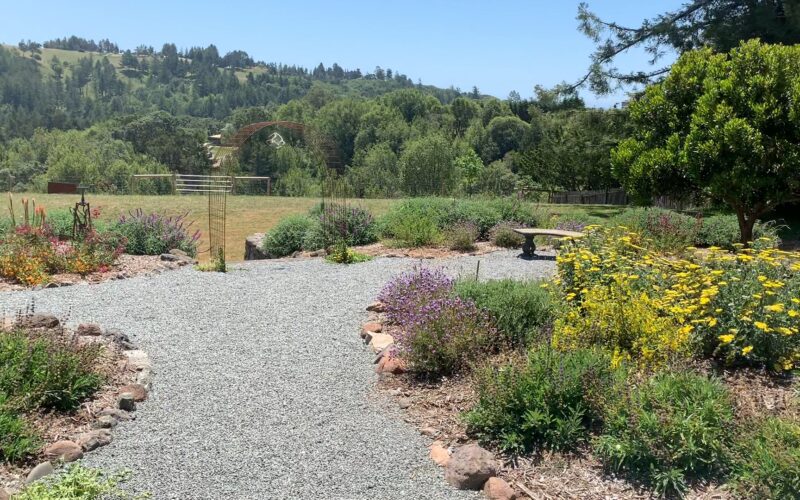
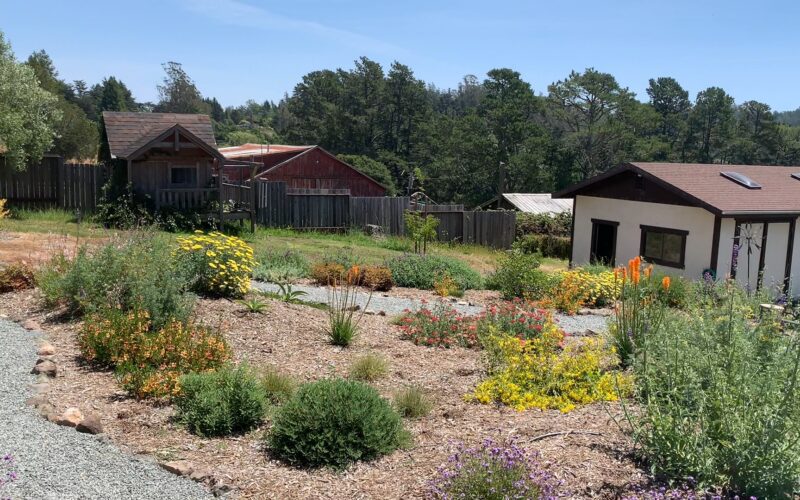
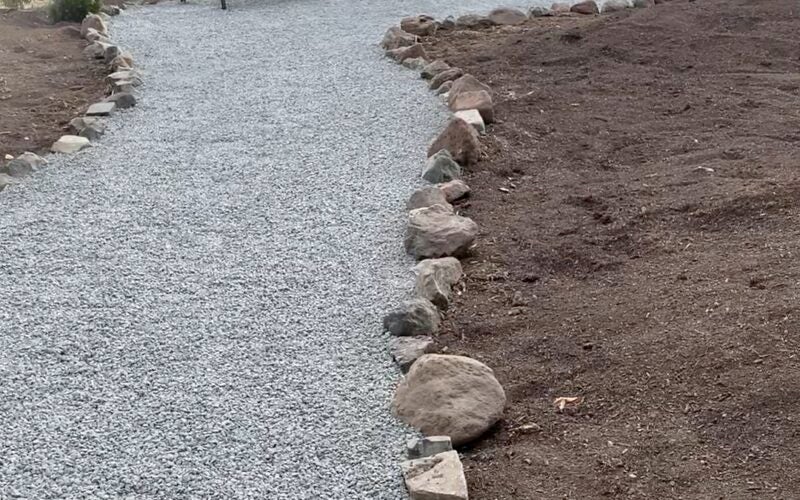
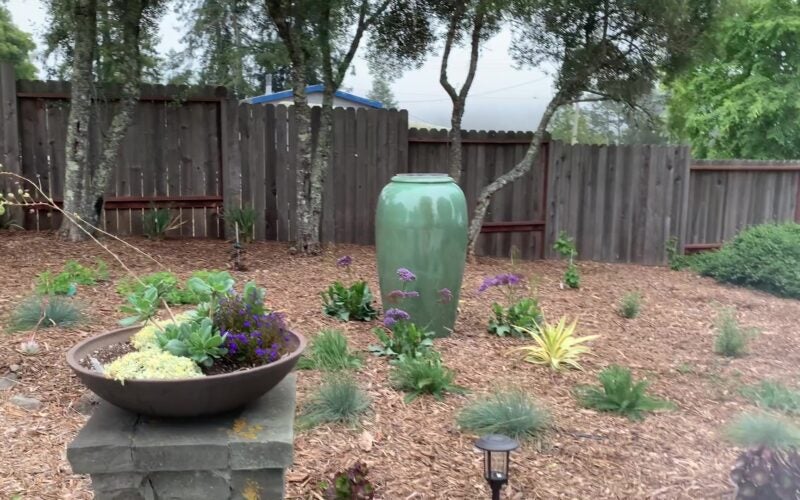
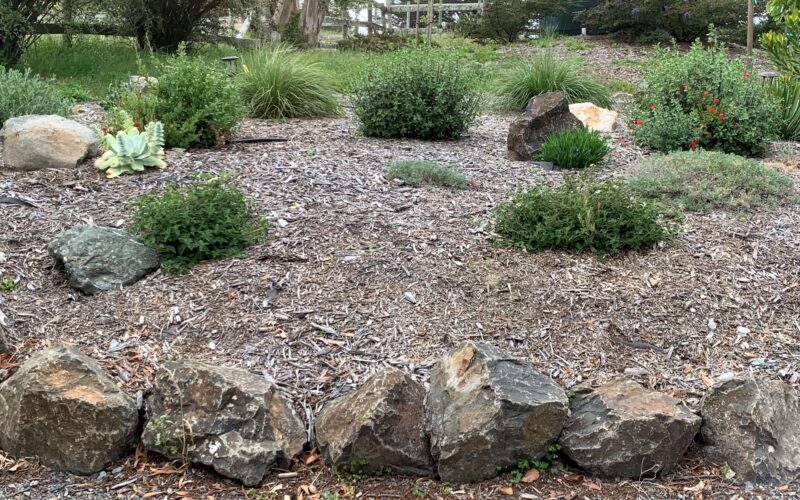
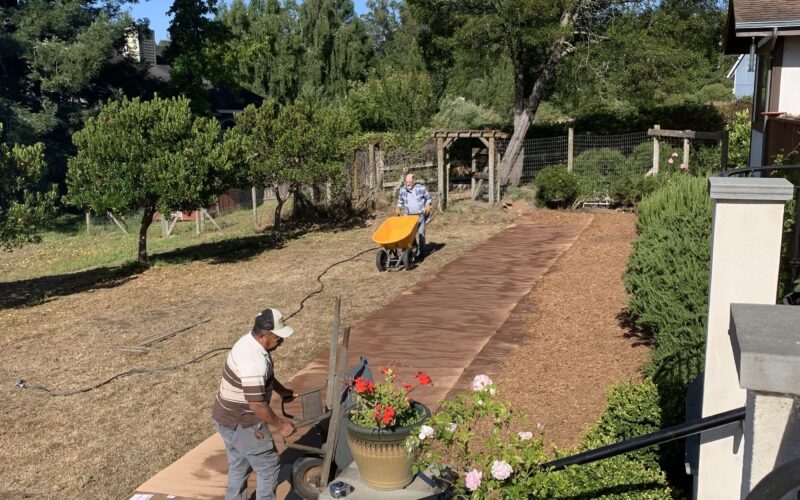
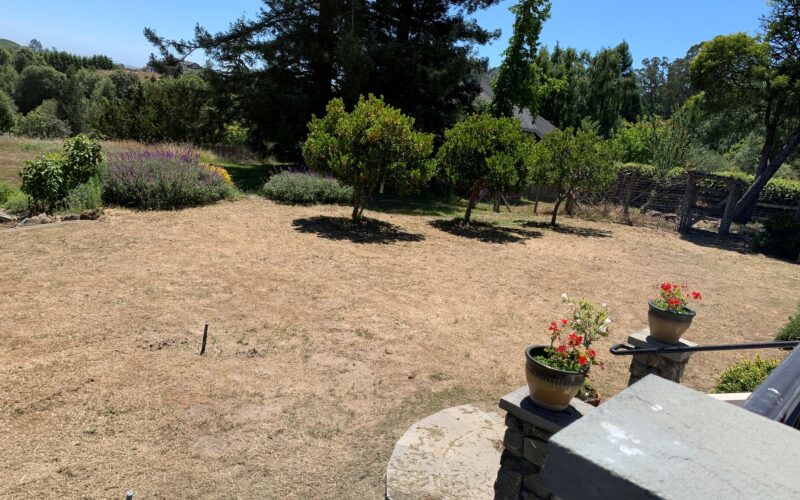
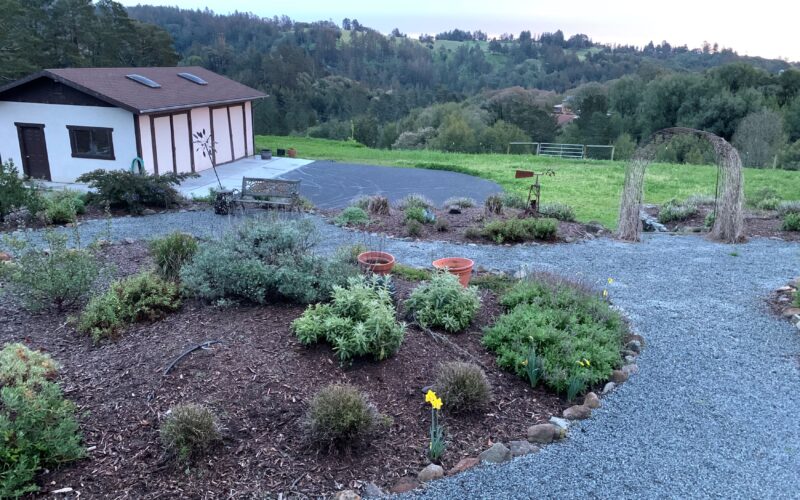
Plants in this Garden
-
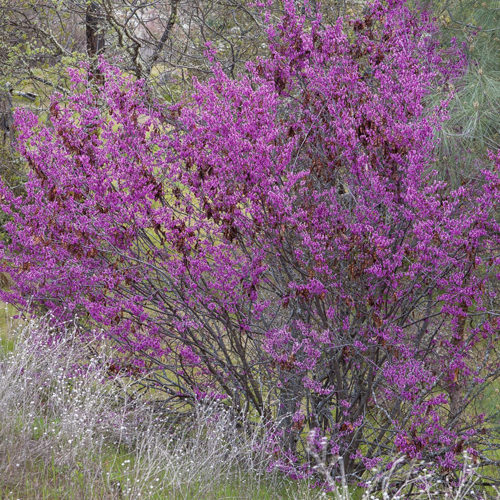
Cercis occidentalis Western Redbud
-
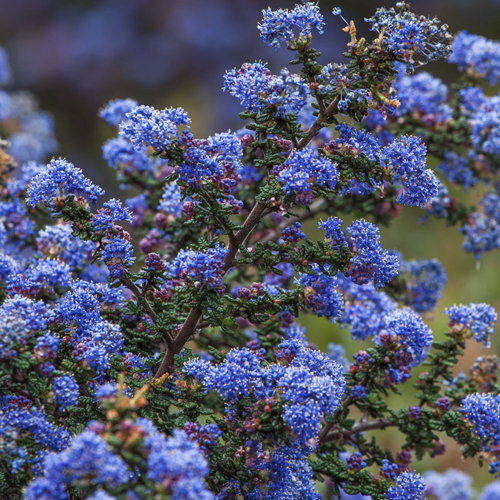
Ceanothus spp & cvs Ceanothus
-
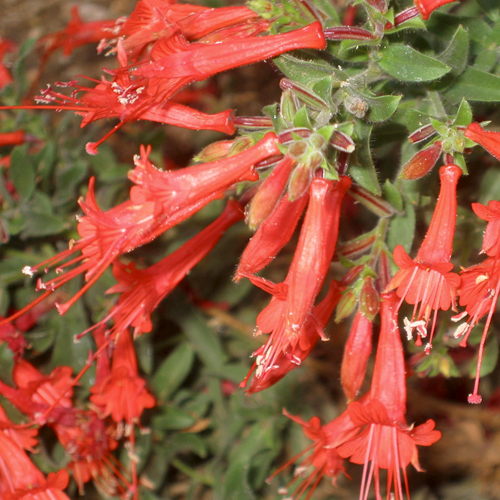
Zauschneria [Epilobium] spp California Fuchsia
-
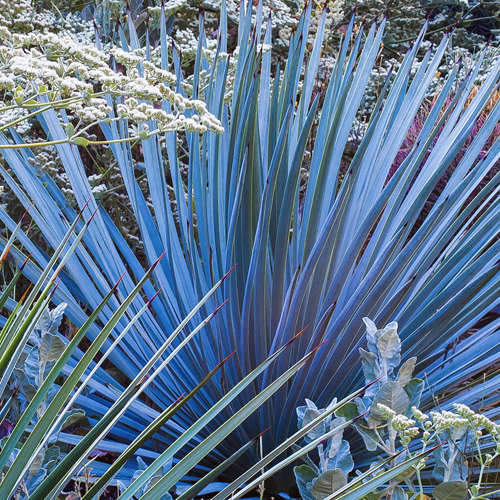
Yucca spp Yucca
-
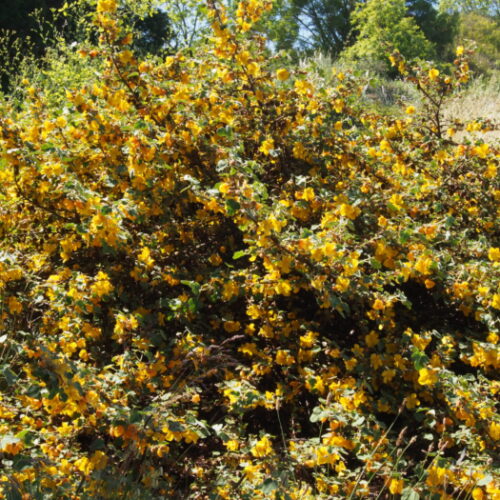
Fremontodendron spp. & cvs. California Flannelbush
-
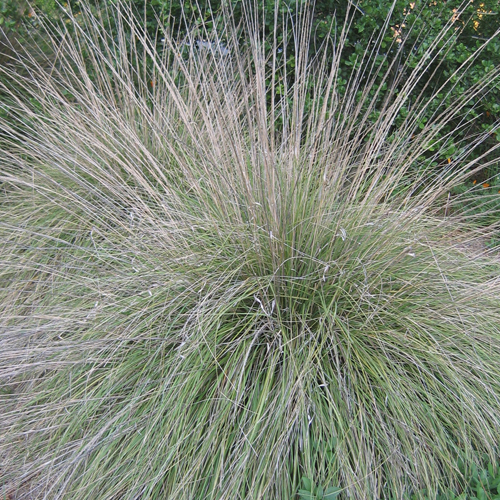
Muhlenbergia spp Muhly Grass, Deer Grass
-
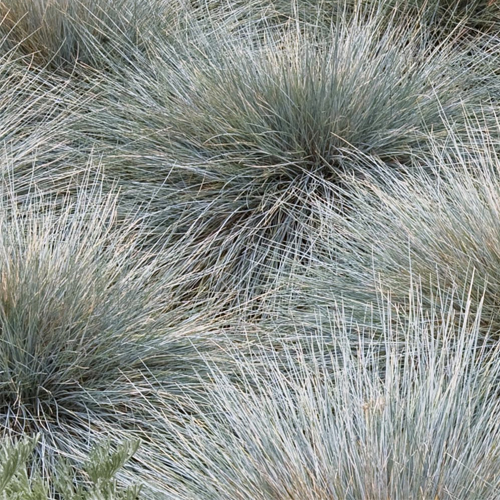
Festuca spp Fescue
-
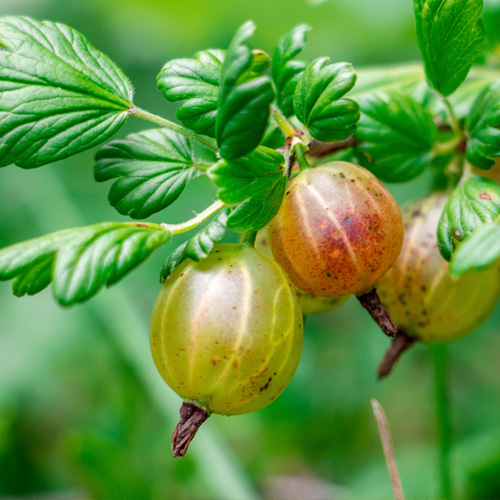
Ribes spp Currant, Gooseberry
-
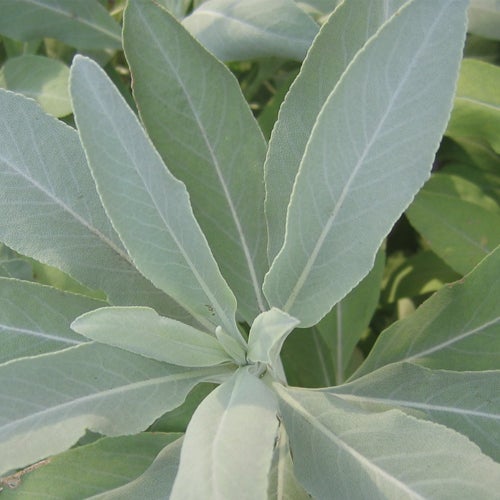
Salvia spp Sage
-
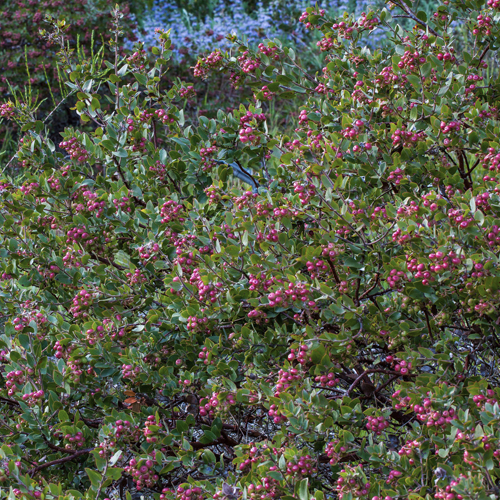
Arctostaphylos spp & cvs Manzanita, 'Dr. Hurd'
-
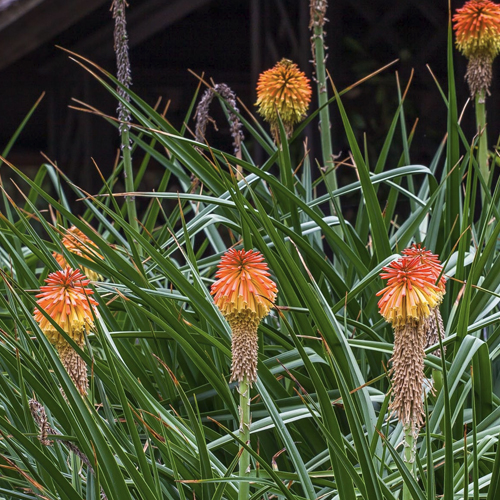
Kniphofia spp Red Hot Poker, Torch Lily
-
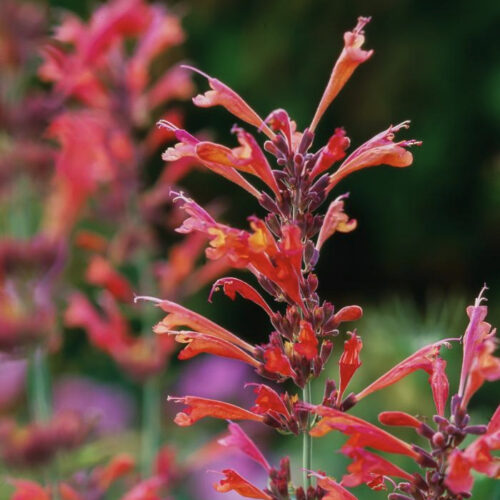
Agastache spp Hyssop, Licorice Mint
-
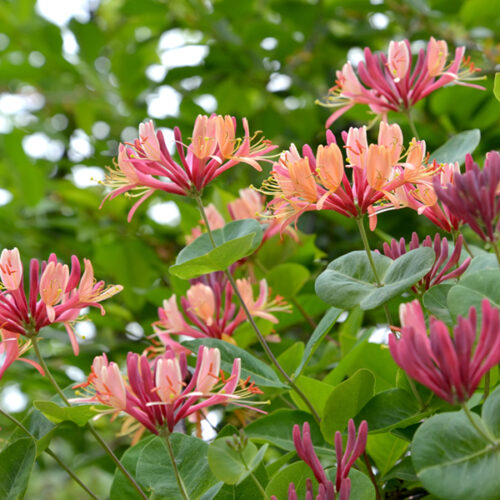
Lonicera spp Honeysuckle
-
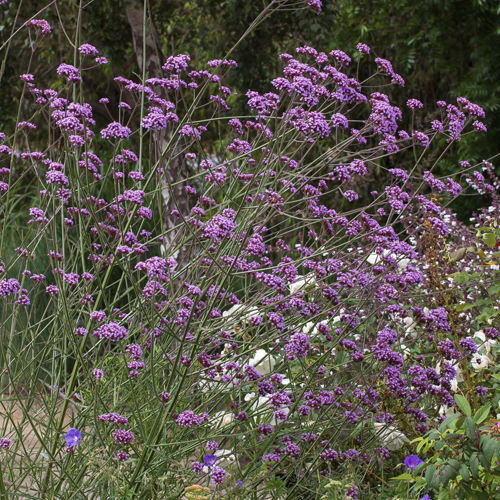
Verbena spp Verbena
-
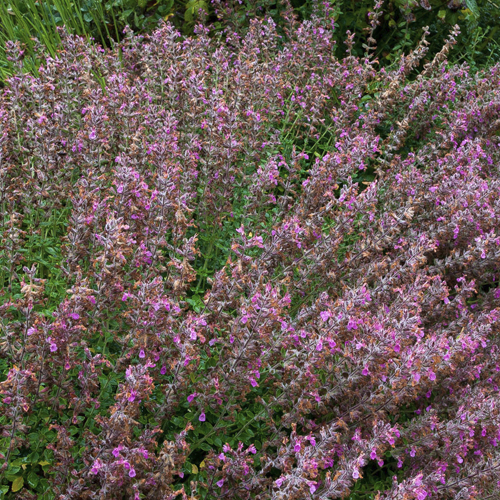
Teucrium spp Germander
-
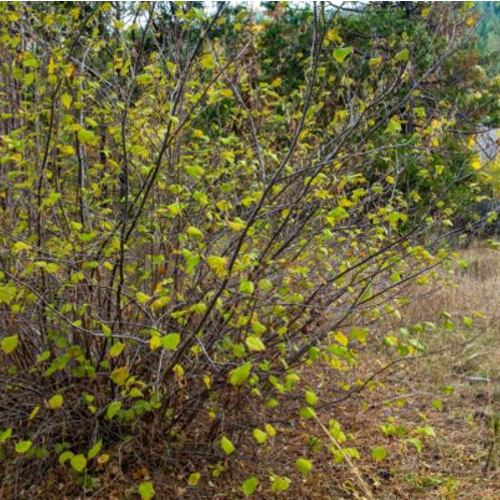
Corylus cornuta californica California Hazel
-
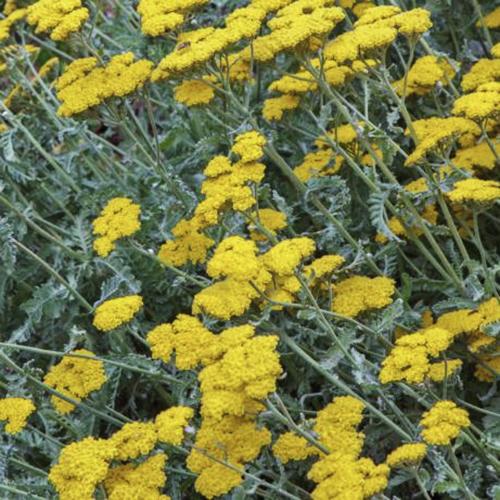
Achillea spp & cvs Yarrow
-
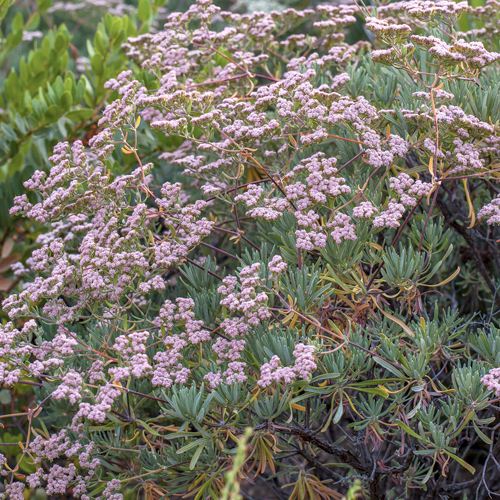
Eriogonum spp Buckwheat
-
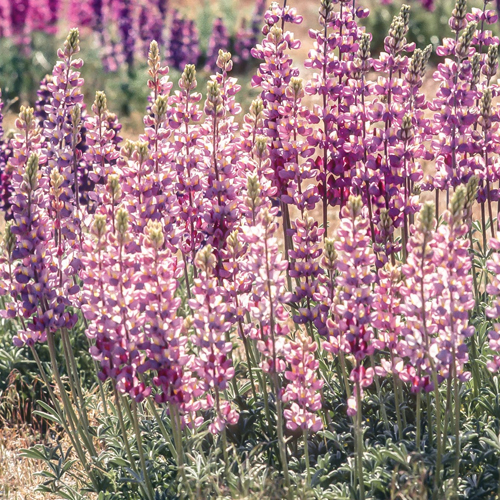
Lupinus spp Lupine
-
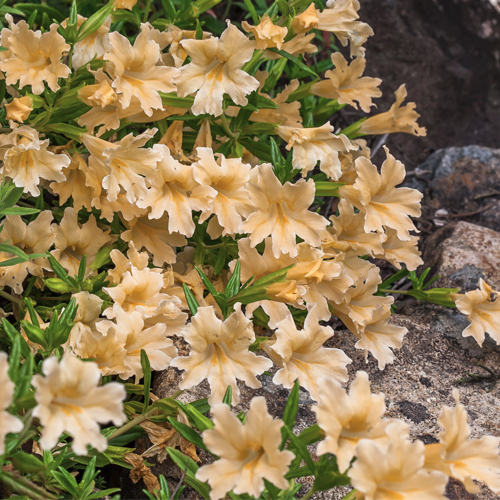
Mimulus aurantiacus and hybrids Sticky Monkey Flower
-
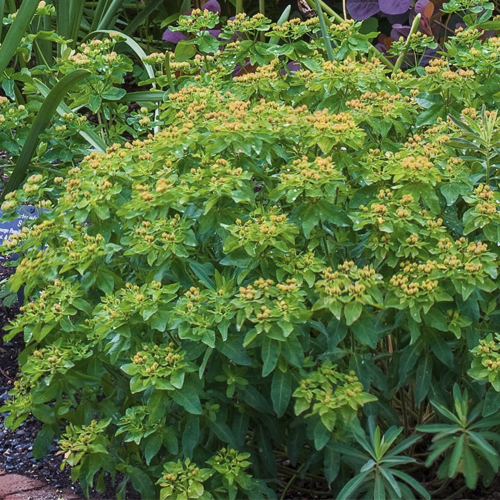
Euphorbia spp Spurge, Euphorbia
-
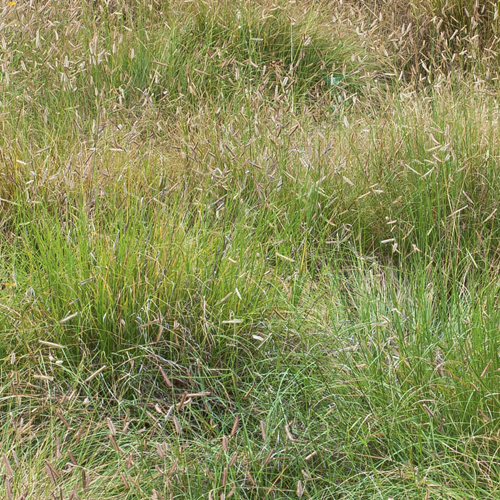
Bouteloua gracilis Blue Grama Grass
-
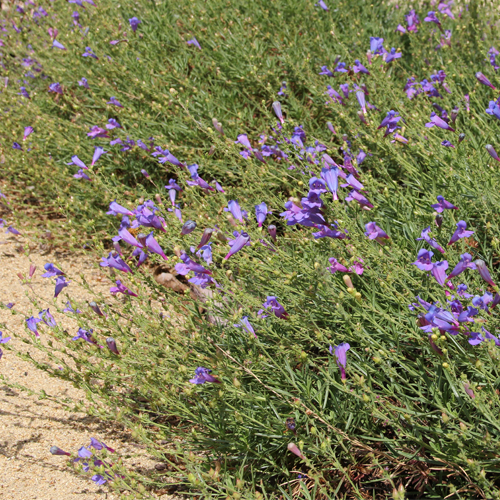
Penstemon heterophyllus Blue Foothill Penstemon, California Penstemon
-
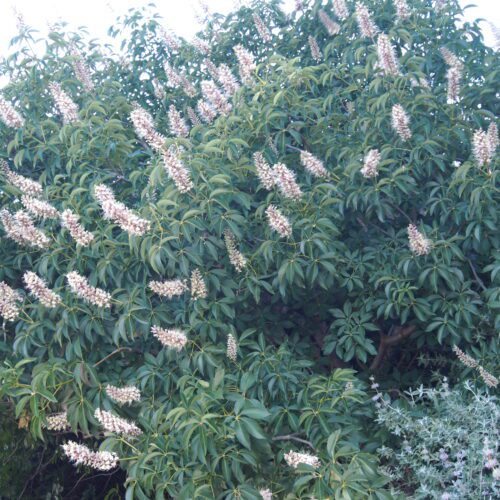
Aesculus californica California Buckeye
-
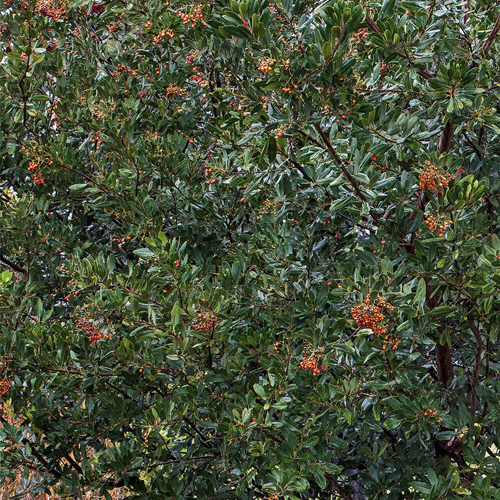
Heteromeles arbutifolia Toyon
-
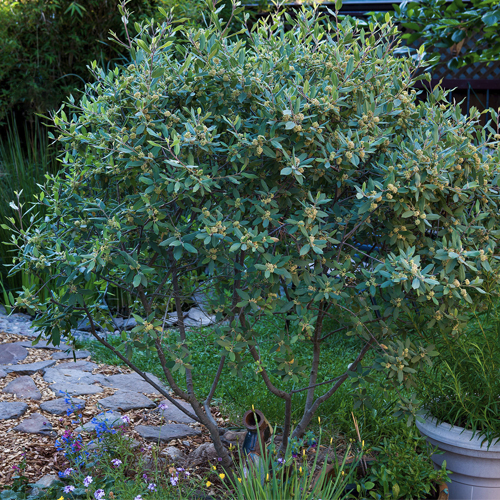
Rhamnus [Frangula] californica Coffeeberry

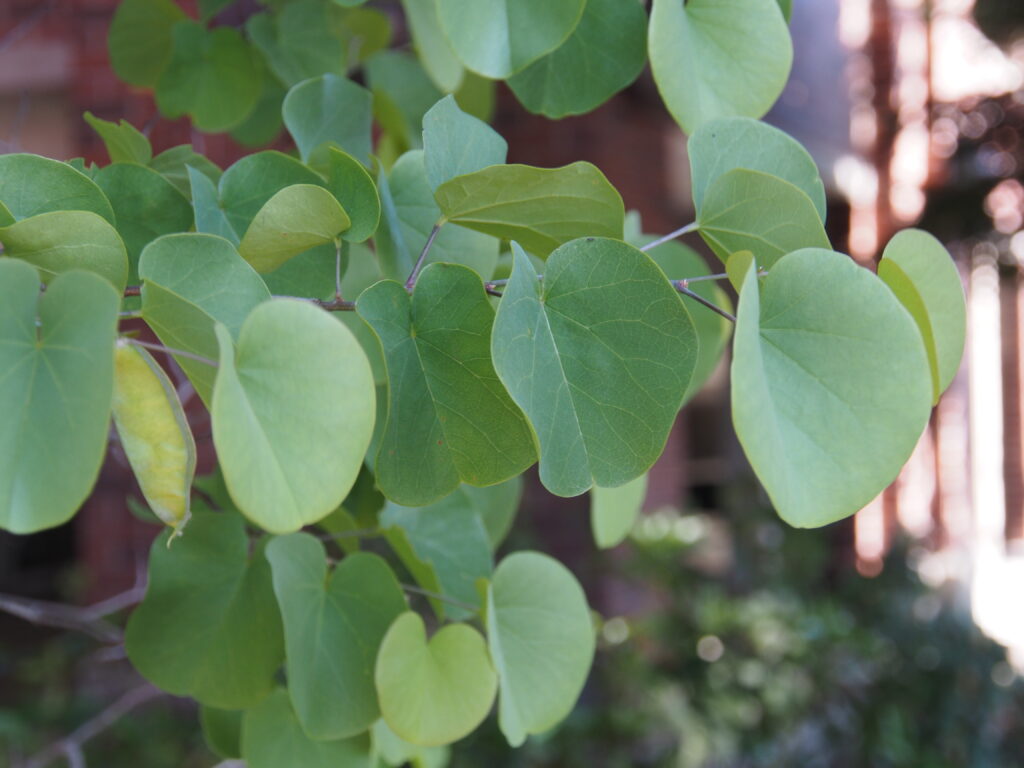
Western redbud is an ornamental, multi-trunked and deciduous, large shrub or small tree with year-round interest that provides a California native and very low-water alternative to the moderate-water Cercis canadensis. Magenta to rosy pink blossoms that resemble pea flowers cover bare branches in late winter to early spring. Apple green, heart-shaped leaves emerge to accompany the flowers. Over the summer, the leaves become more leathery and bluish green, and seed pods mature and remain into the winter months.
- Water: Very Low
- Light: Full SunPartial Shade
- Soil: Most Soils

Ceanothus is a group of fast-growing, evergreen shrubs that vary from groundcovers to small trees, many of which are native to California. They provide a spectacular display of flowers in spring that will attract a multitude of pollinators. Flowers are followed by seeds that provide food for birds. The clusters of tiny flowers range from white to deep violet. Plants perform best with good drainage and minimal irrigation once established. Some do best in cooler coastal climates, but many thrive in hotter inland climates. Pay close attention to the mature size when selecting ceanothus to ensure that it has sufficient space for its natural form.
Groundcovers: C. ‘Centennial’ (1’ x 8’), C. gloriosus var. gloriosus ‘Anchor Bay’ (2’ x 8’), C. griseus var. horizontalis ‘Diamond Heights’ (variegated, 1’ x 4’), C. griseus var. horizontalis ‘Yankee Point’ (3’ x 12’), C. maritimus (2’ x 6’).
Shrubs: C. ‘Blue Jeans’ (6’ x 6’), C. Concha (6’ x 6’), C. ‘Dark Star’ (6’ x 8’), C. ‘Joyce Coulter’ (4’ x 12’), C. ‘Julia Phelps’ (8’ x 10’), C. cuneatus (8’ x 8’), C. thyrsiflorus ‘Skylark’ (4’ x 6’).
Large shrubs: C. ‘Frosty Blue’ (10’ x 12’), C. thyrsiflorus (20’ x 20’), C. t. ‘Snow Flurry’ (white flower, 20’ x 20’).
Trees: C. ‘Ray Hartman’ (15′ x 15′)
- Water: Very LowLow
- Light: Full SunPartial Shade
- Soil: Well Drained

Group of highly variable, semi-evergreen subshrubs and herbaceous perennials distributed over a wide geographic area, including California. Epilobiums bloom in late summer with tubular flowers providing a food source for hummingbirds migrating south and are also attractive to bees and butterflies. Epilobiums range from low-growing groundcovers to upright plants of several feet. Flower colors include orange-red, white, pink, and salmon. Most can be pruned back in late autumn to maintain a more compact form and be rejuvenated for the following year.
Low-growing examples: E. ‘Schieffelin’s Choice’; E. canum ‘Calistoga’, a selection from Phil Van Soelen from California Flora Nursery from the Palisades east of Calistoga; E. canum ‘Cloverdale’, a selection from U.C. Santa Cruz Arboretum from along the Russian River north of Cloverdale with exceptionally orange flowers; E. c. ‘Everett’s Choice’, E. c. ‘Summer Snow’ with white flowers, and E. septentrionale ‘Select Mattole’, a somewhat redder flowering selection that is more shade-tolerant.
Upright examples: E. c. ‘Bowman’s Hybrid’ (2-3’), E. c. ‘Catalina’ (3-4’), E. c. ‘Liz’s Choice’ (3’) selected by Milo Baker Chapter CNPS Fellow Liz Parsons, E. c. ‘Marin Pink’ (2’) with pink flowers.
- Water: Low
- Light: Full Sun
- Soil: Well Drained

Evergreen shrubs and perennials that grow over much of North America and feature sword-shaped leaves. Yuccas typically produce flowers on tall stalks in spring. Some yuccas are stemless while others have trunks and grow to tree size.
Examples: Banana yucca (Y. baccata, 3-4’ x 4-5’) eventually forms a short trunk. Adam’s needle (Y. filamentosa, 2-3’ x 4’) has loose fibers at the edge of leaves. Others are Spanish dagger (Y. gloriosa, 10’ x 8’), beaked yucca (Y. rostrata, 12-15’), and our Lord’s candle (Y. whipplei, 2-4’ x 3-6’), native to Southern California and Baja California.
- Water: Very LowLow
- Light: Full SunPartial Shade
- Soil: Well Drained

Fast-growing evergreen shrub with fuzzy, flannel-like leaves. Large golden yellow to orange blossoms that bloom in the spring. Best suited in full sun with well-drained soils.
- Water: Very Low
- Light: Full Sun
- Soil: Well Drained

Large, showy, clumping, warm-season grasses native to the Southern United States, Mexico, and Central and South America. Can be grown in masses but require sufficient space for the mature size and form to develop. Arching plumes of flowers on long stalks provide significant ornamental value to these low-maintenance and drought-tolerant grasses.
Examples: Pink muhly (M. capillaris, 2-3′ x 2-3’) with feathery pink flowers; pine muhly (M. dubia, 2-3’ x 2-3’) with light purple flowers; Lindheimer muhly (M. lindheimeri, 3-5’ x 4-5’) with creamy yellow flowers that provide a pronounced display; and the California native deer grass (M. rigens, 3’ x 3-4’).
- Water: Low
- Light: Full SunPartial Shade
- Soil: Well Drained

Large group of mostly cool-season, perennial, bunching or spreading grasses. Bunch grass varieties can be used as a no-mow lawn replacement, help to stabilize slopes, and have ornamental value. Festuca californica (California fescue, 1-2’ wide x 2’) prefers part shade and works wonderfully massed under the dry shade of native oaks. Festuca glauca (blue fescue, 1’ x 1’) is a small, clumping grass with bluish gray-green leaves. Festuca idahoenis (Idaho fescue, 1-2’ wide x 1’) also has bluish gray-green leaves and is more drought-tolerant and longer lived than blue fescue. Festuca rubra (red fescue) grows from rhizomes and has long, fine-textured leaves that lay over to form a pleasing drift effect as a no-mow lawn.
- Water: Very LowLow
- Light: Full SunPartial Shade
- Soil: Well Drained

Currants (without spines) and gooseberries (with spines) are grown for their graceful growth habit, attractive foliage, wonderful displays of pendulous flowers in winter-spring that are attractive to hummingbirds, and colorful fruit that provides a food source for birds. Most of the species listed are deciduous, going dormant in the summer months.
Examples: Some of the species suitable for California gardens, preferably with partial shade, are native to the Western United States:
- aurem, golden currant (5-10’ x 3-6’), deciduous with small clusters of delicate yellow flowers and sprawling habit.
- malvaceum, chaparral currant (4-8’ x 4-6’), deciduous with early clusters of pink flowers, a slightly vase-shaped habit, and more drought-tolerant than most species.
- sanguineum var. glutinosum, pink-flowering currant (5-12’ x 5-12’), deciduous with maple-like leaves, a vase-shaped habit, and long pendulous clusters of pink, reddish, or white flowers in the spring; many available cultivars such as ‘Claremont’, ‘Tranquillon Ridge’, and ‘White Icicle’.
- speciosum, fuchsia-flowered gooseberry (4-8’ x 6-10’), deciduous with spiny, arching stems and bright red fuchsia-like flowers along the stems in the spring that are attractive to hummingbirds.
- viburnifolium, evergreen currant or Catalina perfume (2-4’ x 5-7’), evergreen groundcover that works well under oaks and can provide erosion control to slopes.
- Water: Very LowLow
- Light: Full SunPartial ShadeShade
- Soil: Well Drained

Salvias are a huge group of more than 900 species that include annuals, perennials, and shrubs adapted to a variety of climates and have varying water requirements. Salvias are attractive to hummingbirds, butterflies, and bees, and are generally ignored by deer. Sages that are native to California are generally drought-tolerant, prefer full sun, and little to no fertilizer. Annual pruning in late summer or fall generally helps to keep plants tidy and healthy.
CA native sages:
- S. apiana, white sage (3-4’ x 4-6’), silvery-white, aromatic leaves with tall flower spikes of white flowers, popular for honey production and in bundles as a natural incense.
- ‘Bee’s Bliss’ (1-2’ x 6-8’), superb, light gray groundcover with light purple flowers on long spikes; damp conditions can cause mildew which will clear with warm weather and sunny conditions.
- S. clevelandii, Cleveland sage (3-5’ x 3-5’), medium-sized shrub for hot, dry locations known for pleasant fragrance and deep blue whorls of flowers; popular cultivars include S. c. ‘Allen Chickering’, S. c. ‘Pozo Blue’, and S. c. ‘Winnifred Gilman’.
- S. leucophylla, purple sage, includes plants with both an upright growth habit, such as S. l. ‘Amethyst Bluff’ (3-5’ x 3-5’) and others with a sprawling form, such as S. l. ‘Point Sal’ (2-3’ x 6’), both of which are from Santa Barbara county.
- S. sonomaensis, Sonoma sage (1-2’ x 3-4’), groundcover that prefers light shade and will not tolerate damp conditions; cultivars include S. s. ‘Dara’s Choice’, S. s. ‘Greenberg Gray’, and S. s. ‘Hobbit Toes’.
- S. spathacaea, hummingbird sage (1-2’ spreading), herbaceous groundcover that grows well in dry shade and spreads slowly by underground rhizomes; large leaves have a wonderful fruity fragrance; the only red-flowered native sage.
- S. mellifera, black sage (6′ x 10′), evergreen shrub that grows well in full sun and well drained soils. Dark green leaves with pale purple flowers in late spring and early summer.
Non-native sages:
- S. chamaedryoides, germander sage (2-3’)
- S. chiapensis, Chiapas sage (1-2’ x 3-4’)
- S. greggii, autumn sage (1-4’ x 1-4’)
- S. leucantha, Mexican bush sage (3-4’ x 3-6’)
- S. microphylla, cherry sage (3-4’ x 3-6’)
- S. officinalis, garden sage (1-3’ x 1-3’)
- Water: Very LowLowModerate
- Light: Full SunPartial Shade
- Soil: Well Drained

Manzanitas vary from carpet-forming groundcovers to small trees. Manzanitas have varying shades of striking, reddish brown bark and can provide structure to a garden. These plants have evergreen foliage, small white-to-pink, urn-shaped blossoms in late winter to early spring, and then small fruits that resemble tiny apples.
Groundcovers: A. ‘Emerald Carpet’ (1’ x 3-6’), A. ‘Pacific Mist’ (2-3’ x 6-8’), A. nummularia ‘Bear Belly’ (1’ x 3’), A. uva ursi ‘Radiant’ (6” x 4-6’), A. uva ursi ‘Wood’s Compct’ (1’ x 3’).
Shrubs: A. ‘Howard McMinn’ (5-7’ x 6-10’), A. ‘John Dourly’ (3-4’ x 5-6’), A. ‘Lester Rowntree’ (8-10’ x 10-15’), A. ‘Sunset‘ (5-7’), A. bakeri ‘Louis Edmunds’ (8-10’), A. manzanita ‘Sentinel’ (6-8’ x 5’), A. hookeri ‘Wayside’ (3′ x 8′).
Trees: A. manzanita ‘Dr. Hurd’ (10-15′)
- Water: Very LowLow
- Light: Full SunPartial Shade
- Soil: Well Drained

Mostly South African perennials with strap-like leaves and a clumping growth habit that are characterized by striking displays of brightly colored flower clusters on long, bare stems resembling red hot pokers. The majority of plants offered are cultivars of different sizes and various flower colors, including yellows and oranges. Sizes range from about 1-4’ tall.
- Water: Low
- Light: Full SunPartial Shade
- Soil: Well Drained
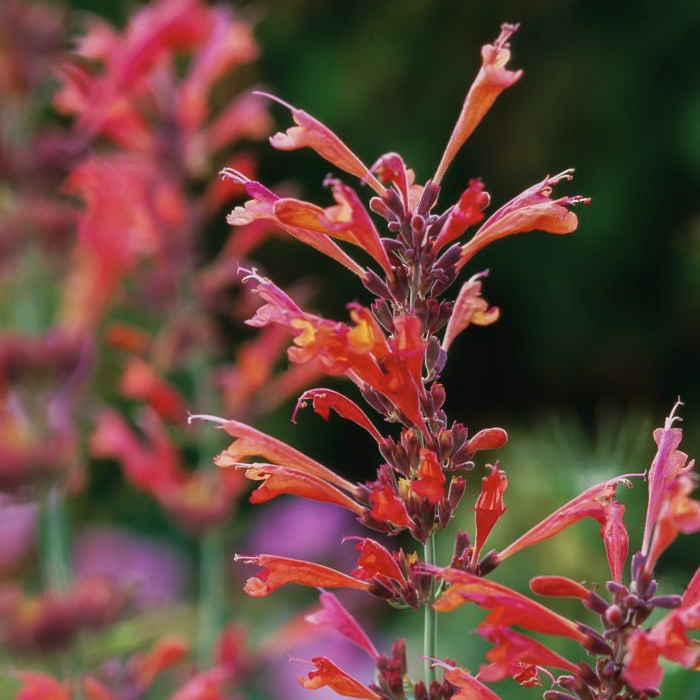
Shrubby perennial in the mint family with aromatic gray-green leaves from southern Arizona and northern Mexico. Tubular orange and lavender flowers from midsummer to fall. Can be short-lived in clay soils.
- Water: Low
- Light: Full SunPartial Shade
- Soil: Well Drained

Honeysuckle is a varied group of evergreen and deciduous shrubs and vines with fragrant, tubular flowers. Several species are native to California and are well suited to gardens in Sonoma and Marin counties. Flowers are attractive to bees and hummingbirds and berries provide food for birds.
Examples: California honeysuckle (Lonicera hispidula) is a deciduous, vining shrub often seen growing in woodland environments. Cream and pink flower clusters in spring are followed by red berries in late summer. Twinberry (Lonicera involucrata, 6-10’ x 6-10’) is a deciduous shrub that typically grows along streams and other moist places. Tubular, red and yellow flowers grow in pairs, followed by dark pairs of berries. Provide light shade in warmer locations.
- Water: Low
- Light: Full SunPartial Shade
- Soil: Well Drained

Fast-growing perennials that thrive in hot locations and produce clusters of small, showy flowers in summer.
Examples:
- V. bonariensis (3-6’ x 2-3’) is an upright perennial from South America with long, airy flower stalks. Reseeds readily and should not be planted near riparian areas where it can be invasive.
- Garden verbena (V. x hybrida, 6-12” x 2-3’) is a popular and showy groundcover available in many colors.
- Cedros Island verbena (V. lilacina ‘De La Mina’, 1-2’ x 2-3’) from the Cedros Island off the coast of Baja California is a popular native for its deep purple flower color and uniform growth habit.
- Water: Very LowLow
- Light: Full Sun
- Soil: Well Drained

Mediterranean, flowering, shrubby perennials with aromatic foliage.
- Wall germander (T. chamaedrys [x lucidrys], 1’ x 2’) is a popular groundcover with upright stems, dark green leaves, and red-purple or white flowers in summer.
- Majorcan germander (T. cossonii [majoricum], 6” x 2’) is a creeping perennial that produces a profusion of rosy purple flowers in mid-to-late spring.
- Bush germander (T. fruticans, 4-8’ x 4-8’) has silvery foliage and bears lavender-blue flower spikes from winter to spring and sporadically throughout the year.
- Water: Very LowLow
- Light: Full Sun
- Soil: Well Drained

Slow growing and long-lived deciduous shrub with rounded oval and coarsely toothed, green leaves. Can live in well drained sandy, sandy loam, and gravel and cannot tolerate clay soils. Producing small, hard-shelled nuts in late winter.
- Water: Low
- Light: Partial Shade
- Soil: Well Drained

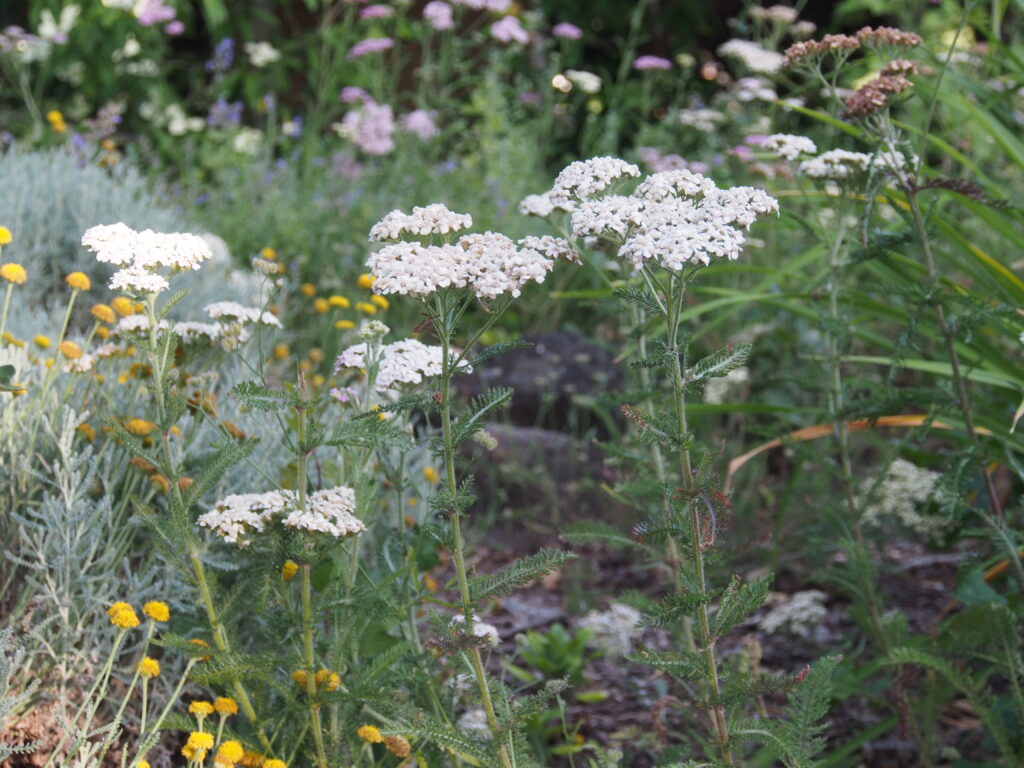
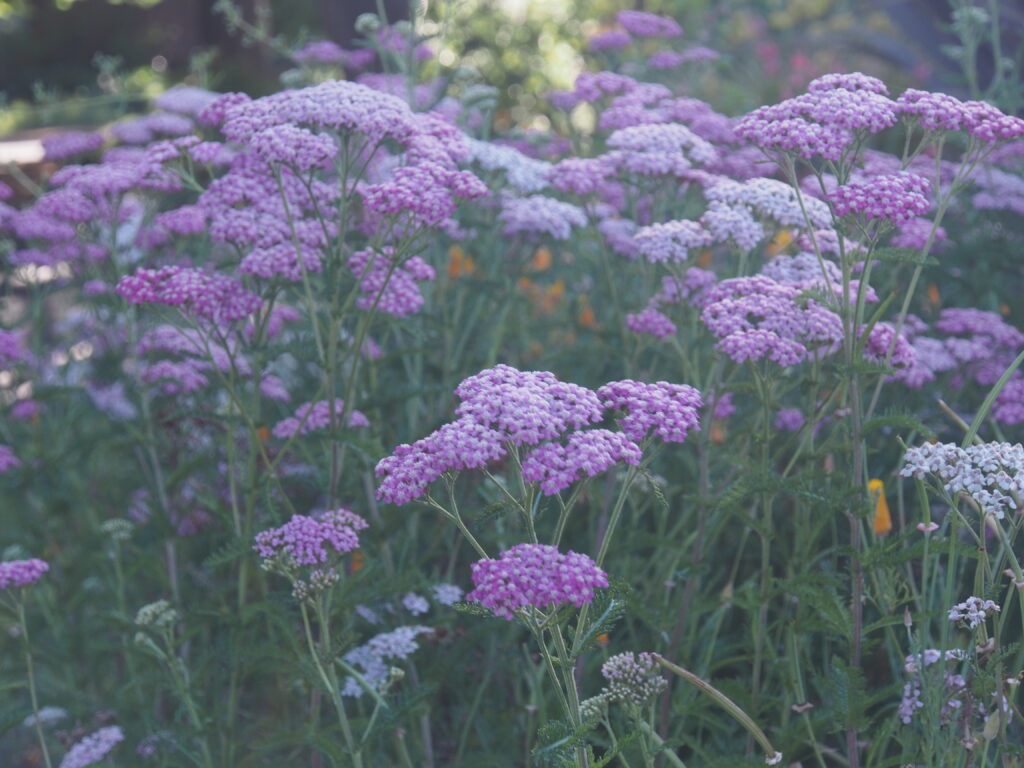
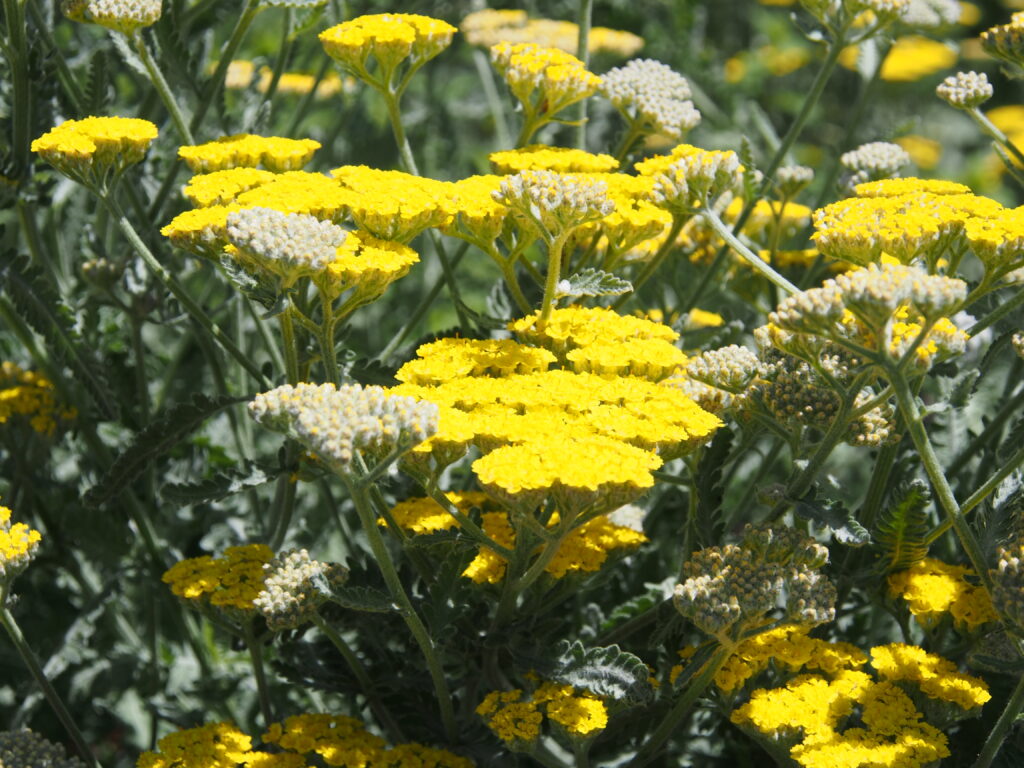
Yarrows are variable low-growing, spreading herbaceous perennials with finely divided leaves that inhabit many temperate regions in the Northern Hemisphere. Flattish clusters of flowers form in spring and well into summer and provide an important nectar source for pollinators and insects. Yarrow can help to stabilize slopes and is a good addition to the upper level of rain gardens and swales. Colors include yellow, pink, and red.
California native spp & cvs: A. millefolium (common yarrow), A. m. ‘Calistoga’, A. m. ‘Island Pink’, A. m. ‘Sonoma Coast’, A. m. ‘Terracotta’.
Other yarrows: A. filipendulina (fern leaf yarrow), A. f. ‘Coronation Gold’, A. ‘Moonshine’, A. tomentosa (woolly yarrow).
- Water: Low
- Light: Full SunPartial Shade
- Soil: Most Soils

Diverse group of flowering, evergreen shrubs and perennials and annuals found throughout the western United States. Most available in nurseries are native to California and generally prefer drier sites. Flowers colors include yellow, white, pink, and red and are held above foliage in umbels that dry over time and are popular in flower arrangements. Buckwheats provide pollen and nectar for bees and butterflies, larval food for butterflies, seeds for birds, and cover for many creatures.
Examples:
- Santa Cruz Island buckwheat (E. arborescens, 3-4’ x 4-5’) densely mounded with white flowers.
- Saffron buckwheat (E. crocatum, 1-2’ x 2-3’) with chartreuse-yellow flowers and pale leaves.
- California buckwheat (E. fasciculatum, 2-3’ x 3’) and its low-growing cultivars such as E. f. ‘Warriner Lytle.’
- Catherine’s lace (E. giganteum, 4-8’ x 6-10’) with delicate, white flowers and soft pale leaves.
- Red-flowered buckwheat (E. grande var. Rubescens, 1-2’ x 2-3’) low-mounding perennial with rose-pink flowers, coastal bluff buckwheat (E. latifolium, up to 12” x 1-2’.)
- Sulfur buckwheat (E. umbellatum, 6-18” x 1-3’) with intense yellow flowers and cultivars E. u. var. aureum ‘Kannah Creek’ and E. u. Var. ‘Shasta Sulphur’.
- Water: Very LowLow
- Light: Full SunPartial Shade
- Soil: Well Drained

Popular group of annuals, perennials, and shrubs with distinctive divided leaves that are common throughout the western United States, including California. Pea-like flowers are displayed on spikes and are attractive to bees and other pollinators. Most native lupines are purple-flowered, while some are yellow. Provide full sun and good drainage and watch out for slugs and snails.
Examples: Silver bush lupine (L. albifrons, 3-4’ x 3-4’), prostate lupine (L. albifrons var. collinus, 12-18” x 12-18”), coastal bush lupine (L. arboreus) available with either blue or yellow flowers but can be invasive in some north coastal dunes, and blue-and-white lupine (L. bicolor) a low-growing, annual wildflower.
- Water: Very Low
- Light: Full Sun
- Soil: Well Drained

The orange, tubular flowers of sticky monkey flower can be enjoyed in many locations throughout Sonoma and Marin counties in spring and summer, a testament to how well this plant is adapted to hot and dry conditions. The slightly sticky leaves benefit from light pinching and pruning to maintain an attractive appearance and support for the beautiful flowers. Many hybrids provide color variation. Do not confuse this plant with the red-flowered scarlet monkey flower (Mimulus cardinalis), an herbaceous riparian plant that requires regular water to thrive.
- Water: Very Low
- Light: Full SunPartial Shade
- Soil: Sandy

Large and variable group of several thousand plants that vary in both form and water requirements. Caution: Some euphorbias reseed readily, and all have milky white sap that is irritating to skin and poisonous.
Low-water examples: Mediterranean spurge (E. characias, 3-4’ x 3-4’) and E. c. spp. Wulfenii offer large clusters of flower bracts; creeping spurge (E. myrsinites, 6-12” x 12-18”); Martin euphorbia (E. x martinii & cvs, 2-3’ x 2-3’) offers a more compact shrub form than Mediterranean spurge with brown-centered chartreuse flowers.
- Water: Low
- Light: Full Sun
- Soil: Well Drained

North American native, warm-season bunchgrass with narrow, grayish green leaves. Ornamental flowers like small brushes form at right angles to slender stems during the summer and persist for many months. Blue grama is adapted to heat, drought, cold, and foot traffic. It does not thrive in shade or wet soils. Blue grama can be used in small clumps among other plants, in a mass as part of a meadow, or even as a lawn substitute. B. g. ‘Blonde Ambition’ is a popular and robust cultivar.
- Water: Low
- Light: Full Sun
- Soil: Well Drained

Penstemons are a large group of woody or herbaceous perennials with narrow leaves and tubular flowers. Foothill penstemon is a widely known and grown California native with iridescent purple-blue flowers during spring and early summer that are attractive to hummingbirds. The cultivar known as ‘Margarita BOP’ is widely available, reliable, and garden- tolerant. Remove spent flower spikes to encourage more flowers.
- Water: Low
- Light: Full SunPartial Shade
- Soil: Well Drained

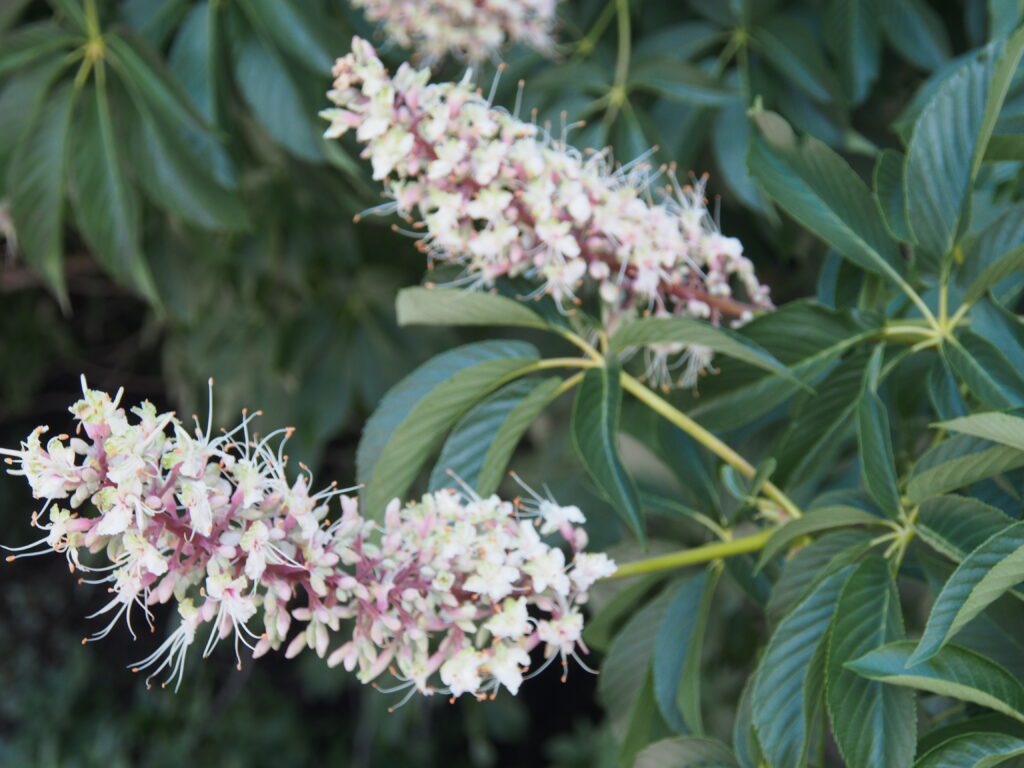
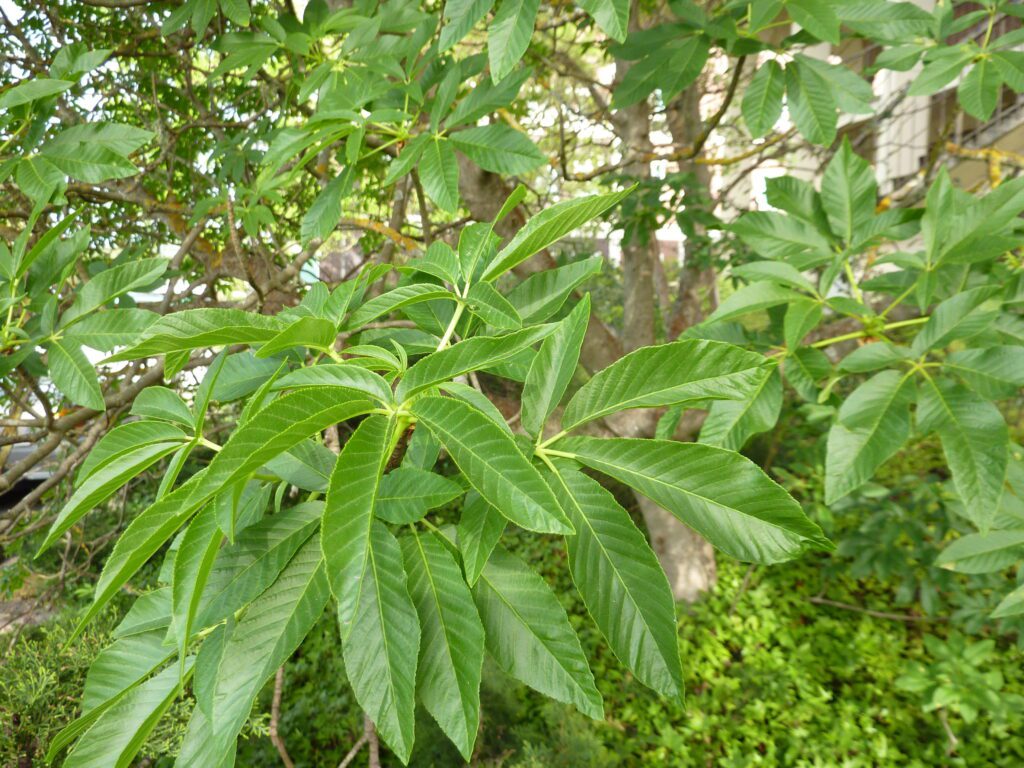
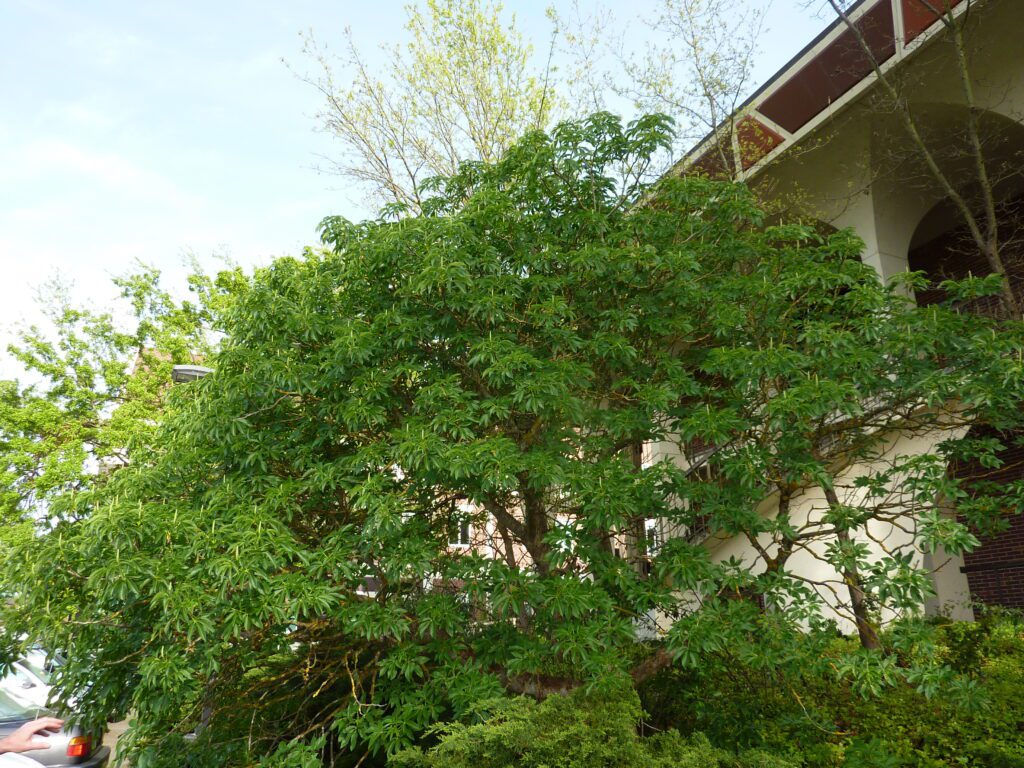
Large, multi-trunked shrub or small tree. Silvery gray bark with green leaves and clusters of fragrant white flowers. Summer deciduous, defoliating in early July and growing during wet winter and spring months. Only buckeye native to California, small trees are found in Southern regions while large shrubs are found in Northern regions.
- Water: Very Low
- Light: Full Sun
- Soil: Well Drained

California native, evergreen shrub or small tree often seen growing in Sonoma and Marin county wildlands. Lacy, white flower clusters in spring attract pollinators; red berries in winter provide a splash of color and an important food source for birds. The name “Hollywood” was born from the abundance of toyon in the hills of southern California and its resemblance to European holly. The cultivar ‘Davis Gold’ has yellow berries and may be more disease-resistant than the species.
- Water: Low
- Light: Full SunPartial Shade
- Soil: Well Drained

Evergreen shrub that has insignificant flowers followed by black berries. Flowers are attractive to pollinators, especially bees, and berries provide a food source for birds. Cultivars commonly sold in nurseries have differing growth habits and are often smaller than the species which grows 5-18’ x 10-18’.
Examples: F. c. ‘Eve Case’ (6-8’ x 6-8’), R. c. ‘Leatherleaf’ (5-6’ x 5-6’), R. c. ‘Mound San Bruno’ (6-8’ x 6-8’) with a dense, mounding growth habit.
Note: California coffeeberry was formerly classified as Rhamnus californica and is now classified as Frangula californica.
- Water: Low
- Light: Full SunPartial Shade
- Soil: Most Soils
Favorite Plants
Ceanothus
It is so prolific and beautiful, easy to grow.
Mimulus
Because it comes in so many colors and maintains its blooms for many months.
Kniphofia
Because of its architectural addition to the garden and it is always a surprise.
Epilobium
It has so many varieties!
Cercis occidentalis
Because it has so much beauty in every season.
Favorite Garden Suppliers
Cal Flora Nursery
2990 Somers Street Fulton
Recommended Resources
Create a Mediterranean Garden
Written by BarronSunset Garden Design
Sunset Western Garden Book
Gardening Tips
Read a lot, determine the elements (light, soil, drainage) and plant accordingly.
Start planning 9-12 months out- you may need to sheet mulch, prepare the soil, create a plant list and start shopping online- get plant lists.
Prepare to plant in the fall if you are planting natives.